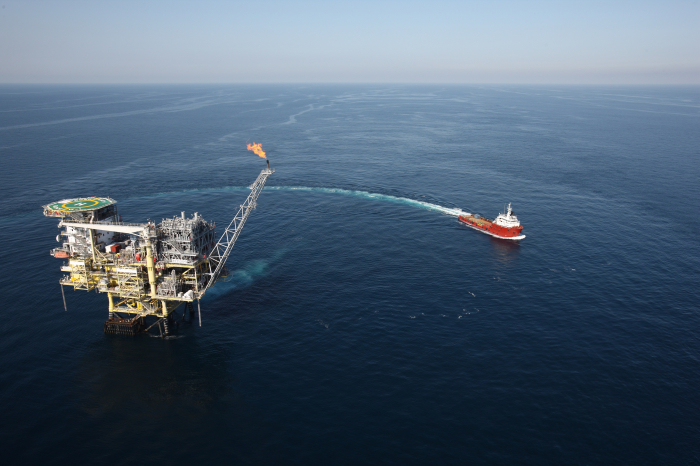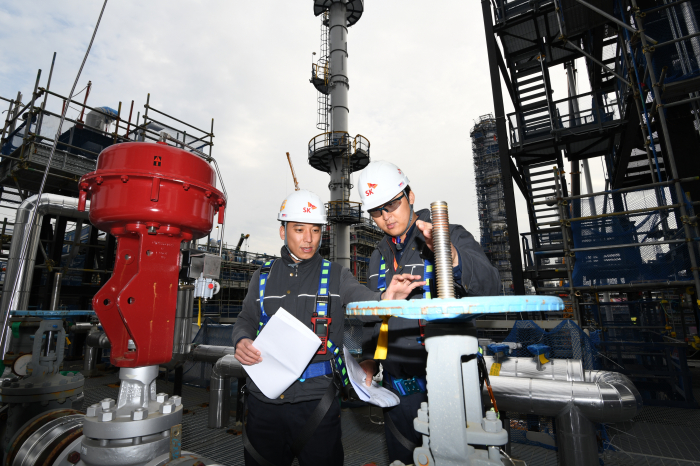SK Innovation in CO2 capture, storage technology project
South Korea to build CO2 storage facility in the East Sea
May 26, 2021 (Gmt+09:00)
LG Chem to sell water filter business to Glenwood PE for $692 million


Kyobo Life poised to buy Japan’s SBI Group-owned savings bank


KT&G eyes overseas M&A after rejecting activist fund's offer


StockX in merger talks with Naver’s online reseller Kream


Mirae Asset to be named Korea Post’s core real estate fund operator



SK Innovation Co. signed an agreement on May 26 to participate in South Korea's first government-led project to develop carbon capture and storage (CCS) technology, according to a company announcement.
Under the project led by the state-run Korea National Oil Corp. (KNOC), the country aims to build a CCS facility with an annual capacity of more than 4 million tons by 2030.That will likely become the country's first sizeable storage facility for CO2, in line with the carbon neutrality initiative that South Korea has pledged to achieve by 2050.
CCS technology captures CO2 at coal plants and transports it via pipelines before injecting it into an underground storage facility (made of porous rock that absorbs the CO2 like a sponge).
According to forecasts by the International Energy Agency (IEA), CCS is expected to contribute 14% to cumulative CO2 reduction by 2060. CCS is already in commercial operations in 26 facilities around the world and a further 65 commercial CCS facilities are in various stages of development globally.
SK Innovation is one of three private entities joining in the project, along with two universities in South Korea. As the site of storage facilities, they will use the gas fields off Ulsan in the East Sea that are set to be shut down in June 2022, the company said in a statement.
From 2025, the country will capture 400,000 tons of carbon dioxide (CO2) per year and transport them to the gas fields in the East Sea for storage.
For the project, SK Innovation and SK Energy will develop optimal models for CO2 capture and storage in the industrial complexes in Ulsan, where both companies run chemical and petrochemical factories.
Other participating members, including KNOC and the two universities, will be tasked with the development of transportation and storage models.
The state project will give the two SK Group units an opportunity to verify their carbon capture technology and study its business feasibility, according to SK Innovation.
As the project proceeds, SK Innovation expects to secure carbon credits in consultation with other participating members in the project.
Further, if the optimal carbon capture (CC) technology is applied to the hydrogen plant in SK Energy's complex in Ulsan, it will contribute to reducing carbon emissions generated in the production process. SK Energy will incorporate the CC technology into other high-emitting processes within its Ulsan complex.
Separately, SK Innovation is developing a next-generation absorber with which carbon dioxide is captured by chemical absorption. Going forward, SK Innovation will expand its participation in government-led CCS projects.
In February of this year, SK Innovation and SK Energy agreed to join in a CCS technology research project, led by a Norwegian national research institute, for the European Union.

"CCS technology is a necessary prerequisite for reducing carbon emissions generated from energy-guzzling industries," Lee Seong Jun, head of SK Innovation's Institute of Technology Innovation, said in the statement.
The company's participation in the government-led CCS project will help it preemptively secure optimal CCS technology and contribute to its ESG management, he added.



